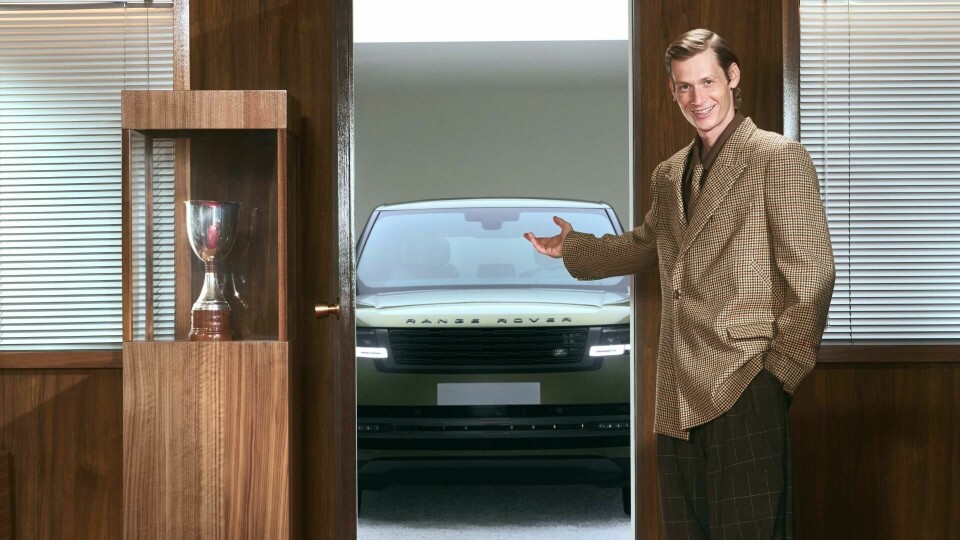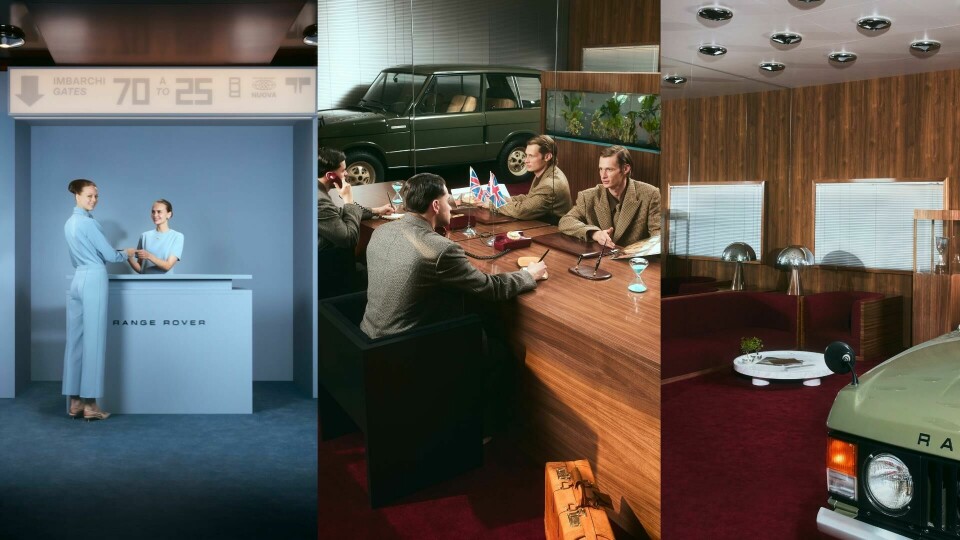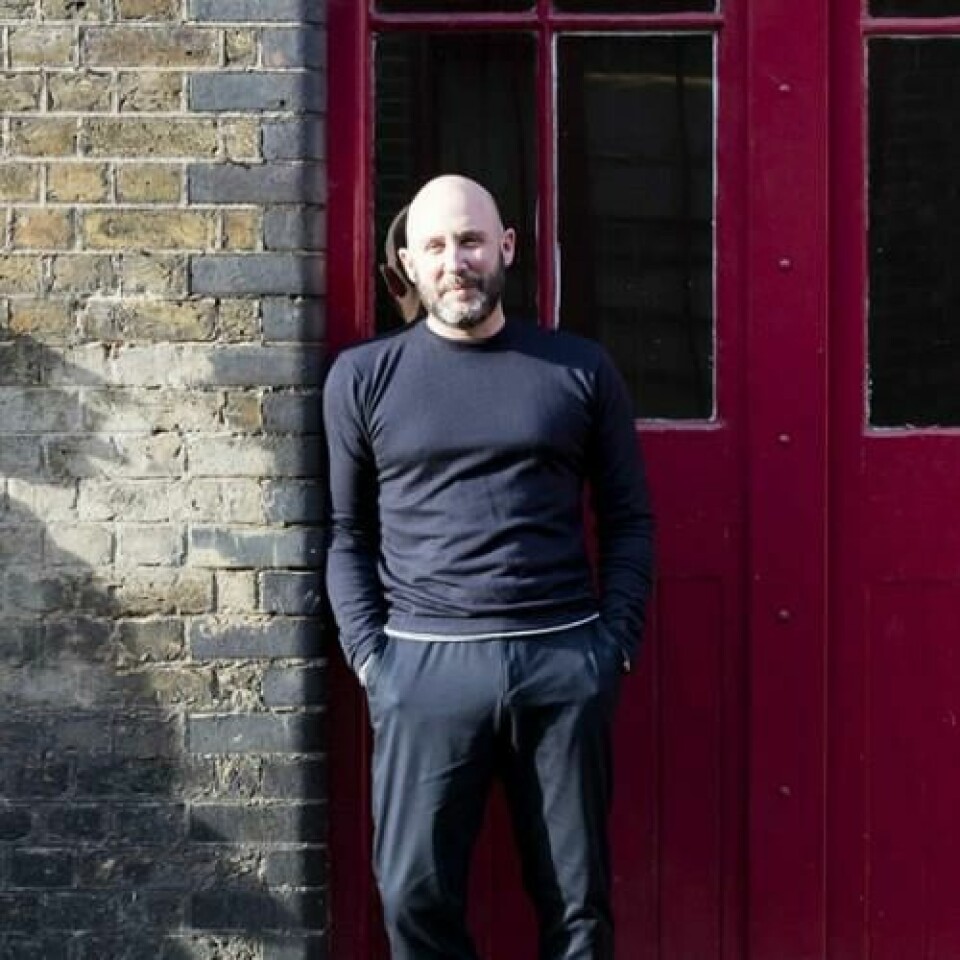
Interview: Richard Stevens, design director at JLR
Range Rover’s time-travelling installation at Milan Design Week was the star of the show. Car Design News spoke to design director Richard Stevens about how it feeds into a broader design strategy
For any car brand exhibiting in Milan during the Salone del Mobile, the trick is cutting through the noise. Running over 5 days (not counting the satellite events), it is the busiest design festival in the world.
To get noticed, you need to offer something genuinely interesting, eye catching to the TikTok/Instagram crowd or a compelling experience. Preferable all of the above.
Kudos then, to Range Rover’s creative team for having ambitions to tick all three boxes by dreaming up a witty and beautifully executed activation that recalled the knowing charm of vintage Range Rover campaigns of yesteryear.
In summary, visitors were invited to visit a 1970s showroom designed by Nuova Group in which two “salesmen” battled for your attention alongside an original Range Rover. Step through another door to fast-forward to the present day where the latest generation RR rested on a bed of white stones surrounded by mirrored columns.

The threatrics align with JLR’s house of brands design strategy, which, as creative director Richard Stevens explains, is how the OEM intends to open its doors to new talent from outside the automotive world.
A car designer who has spent time in parallel industries, most notably heading up Map Project Office, Stevens is well-placed to follow through on this commitment. Car Design News caught up with him in Milan for an impromptu chat.
Car Design News: What is your role at JLR?
Richard Stevens: Twofold. The first thing is to take four incredible names and turn them into truly differentiated brands in their own right through design. That requires a mindset shift of the 900 or so people that exist within the organisation at the moment.

And then bringing in new talent that can help us go to a different level so we become a little bit less blinkered and obsessed with automotive and more focused on designing experiences first – like what we have done with the Nuova Group – and then populating it with products.
CDN: Why is it important to move in that direction?
RS: Our vision, as you know, is to become a house of brands and to focus on the definition of modern luxury. And modern luxury isn’t about just automotive products for automotive obsessed people. It requires a different level of consideration around what people are looking for over traditional luxury experiences. And we’re not pretending that we’re there, but there’s a real definitive vision to get there.
We are trying to get all our designers vehicle designers and multidisciplinary designers, whether it be spatial, graphic, motion, to think in a more holistic way
CDN: Tell us a little more about that vision.
RS: The biggest thing is around the emotion that you need to design into every component part of that experience and the storytelling that wraps around it.
And we’re pretty good at designing products that create emotional attachment. But beyond that, not only us, but I think a lot of OEMs are not very good at considering how you build that emotional response out through other things that people experience that we design or should be designing.
CDN: A more holistic design approach.
RS: Well, we are trying to get all our designers vehicle designers and multidisciplinary designers, whether it be spatial, graphic, motion, to think in a more holistic way. That’s the shift we desperately need. And people are really willing because there’s personal growth in it, rather than just doing headlamps every day for 20 years. That doesn’t fill people with the growth potential that they want.
It’s bringing vehicle designers, which will always be at the heart, to work with product designers, industrial designers and spatial designers, architects, motion graphics, HMI, people that understand the bleed between physical and digital. The automotive industry is not anywhere near that at the moment. We need all that knowledge and expertise in house to build that world.
We’re really focused on multi-sensory experiences and that convey the message in a subliminal way
CDN: How are you changing your recruitment process?
RS: Being in places like Milan is helping us present ourselves in a way that is more open to the wider design world, rather than the automotive design world, which is limiting in terms of recruitment. People are coming to us who are interested in joining that wouldn’t have been only a couple of years ago.
RS: We are not ever going to be interested in saying, look, we have a new product we want to sell and find a way of spinning a narrative. We’re really focused on multi-sensory experiences and that convey the message in a subliminal way.
At the moment, a lot of the way that we speak as a company is still quite automotive centric and we’ve got to get beyond that and the business knows we do. But these sorts of activations are really important to help us get there.
In our studio there genuinely feels like there’s a realisation that we’ve got something special. But we’re not necessarily connecting all the dots up yet. But we’re on a journey
CDN: And the main obstacle on that journey?
RS: The reality is we are a platform and engineering-led company. We make products where we’re trying to find all of the efficiencies presented by generic platforms that work across brands. But we’ve set out our stall as being a house of brands where the customers want to experience completely differentiated propositions between each of those houses. So you’re coming at it from two completely different ends. How do I create those efficiencies without anyone noticing? That’s a fundamental design challenge we have.






